Nestor Walters ’21 walks into CoHo — phone in hand, Google Maps on the screen — after his morning Math 51 lecture. He’s not late, but explains with a laugh that he didn’t know where to find the campus coffee shop and had been looking for it along the Row.
Thirty years old and fresh out of the Navy, Walters isn’t your typical Stanford student. And he certainly didn’t travel to the University in a typical manner. Instead, he chose to bike more than 1,000 miles — from his uncle’s Seattle home to Stanford’s campus — before the first day of classes.
But Walter’s bike ride meant more than a test of physical endurance. He dedicated the trip to educational resources, such as Khan Academy, that helped him get into Stanford in the first place. He made it a point to finish the trip in 6.28 days.
“It’s two times pi,” he explained. “Duh.”
Walters is lighthearted and open, willing to discuss his history as a combat medic and Navy SEAL. Before I can even get to asking questions, though, he wants to learn more about me.
His eagerness to learn tipped me off to the nature of his journey — his international upbringing, his unorthodox educational background and his changing views on religion and science. Walters hopes a mathematics degree from Stanford will help him apply his unique experiences toward his end goal of making the world a better place.
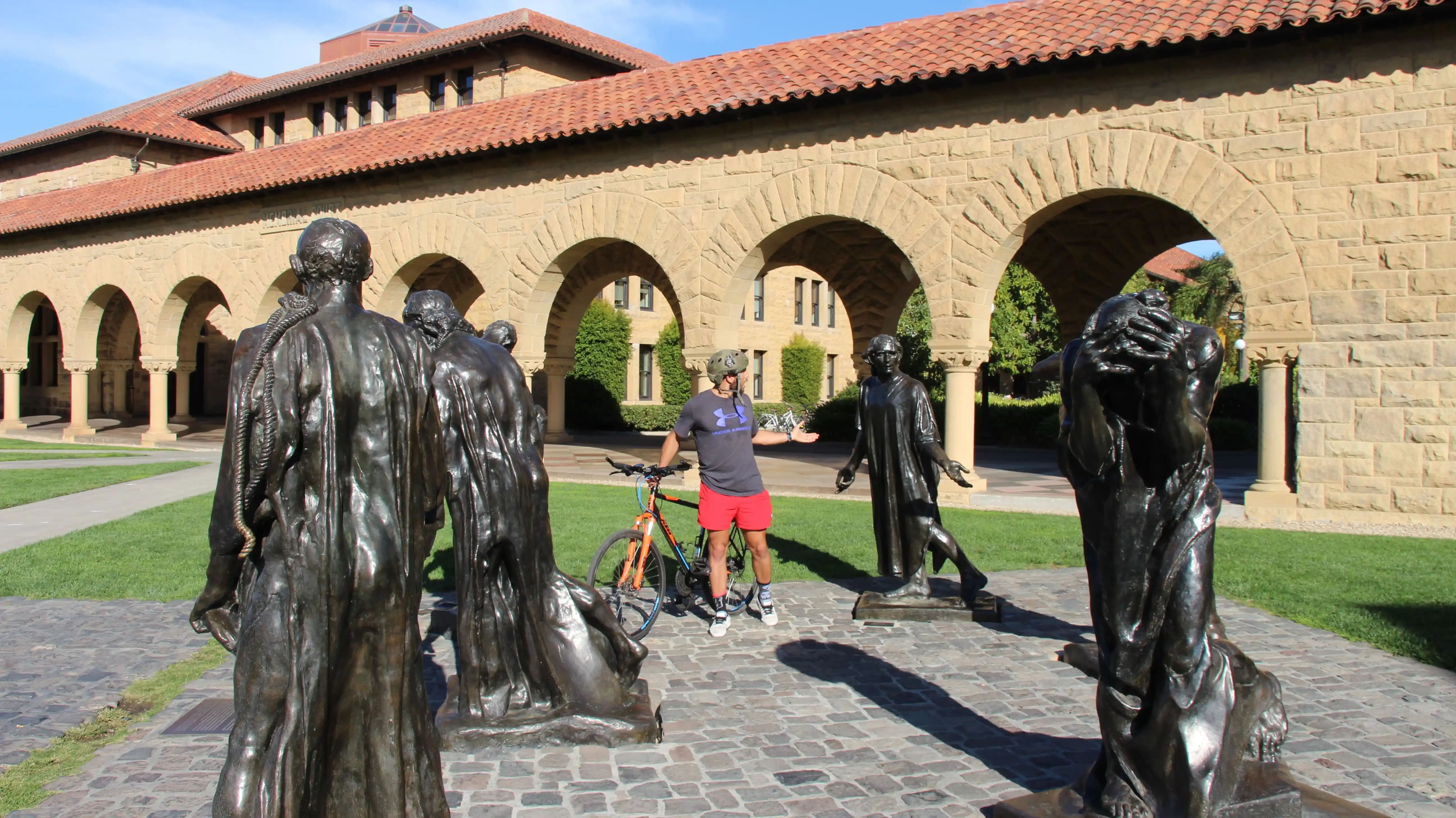
Growing up
Walters’ childhood was far from typical. He was born in Bangladesh, but moved around frequently. His family eventually settled down in Greece, where he had his first real classroom experience.
“I was homeschooled growing up,” he explains. “My parents were ‘missionaries.’ And I’m using quotes here because they were really in a religious cult.”
Walters declined to provide specific details about the cult on the basis of protecting his parents’ privacy, but did say that members were taught basic language skills.
“So it was not exactly Board of Education material,” he described it in a blog post on Facebook.
Thus, when Walter started elementary school in an unfamiliar country that spoke a language he barely knew, he struggled at first even with basic communication.
“I was sitting in the front row,” he said, recounting his first day of second grade. “And the teacher said, ‘Hey, do you need a friend?’ And I didn’t know anyone, so I was like, ‘Hell yeah, I need a friend.’ But she comes back with two pieces of paper.”
He would later learn that the Greek words for “friend” and “paper” are homophones.
As a result of the language barrier, Walters did poorly in many of his classes, receiving grades that were barely above average and frequently getting into fights with his classmates. He grew to hate the concept of sitting in a classroom and learning from a chalkboard — a sentiment he would carry through later schooling as well.
At 19, Walters decided to immigrate to the U.S. He had previously been to the country only once, for an uncle’s wedding when he was eight years old.
Although Walters wanted to join the Coast Guard, he was turned down. He instead ended up joining the Navy as a combat medic, serving in Afghanistan. When he returned to the U.S., he entered training to become a Navy SEAL, going on to serve with the group for about five years.
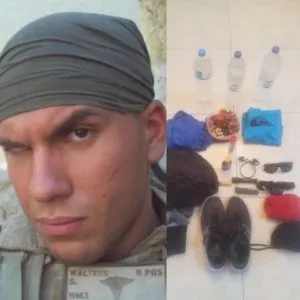
While serving in the Navy, Walters began taking night classes at Hawaii Pacific University. The Navy allows active duty sailors to pursue their education, but Walters had to do so in his own time. He recounts waking up at 5 a.m. to study, going to work by 7:30 a.m. and getting home at 7 p.m. to do homework.
“Some classes were online and some were in-classroom, but the classroom ones crammed a whole week’s worth of material into a single three-hour evening session,” he said. “There were no sections and no school-based tutoring. We just showed up once a week for class and didn’t see each other again until the next week.”
When I asked him why he decided to pursue education despite it being so difficult, his answer surprised me: Neil deGrasse Tyson.
It all started with an episode of Tyson’s science documentary series, “Cosmos.” Walters wasn’t taught evolution in high school; he was taught creationism. The public school he attended taught biology and history using creation theory, starting with the story of the biblical flood 6,500 years ago.
“But when I watched Neil deGrasse Tyson explain evolution, I’m like — are you kidding me?” he recalls. “This whole time, I spent 25 years not understanding this, and all of a sudden I wanted to understand this and understand that.”
“You can learn anything”
For Walters, online YouTube videos were more than just an additional resource to comb through to prepare for an Advanced Placement exam. During his days with the Navy, they were his entire mathematics curriculum, as easy to access as Googling “Free Online Math Classes.”
“In a video called ‘You Can Learning Anything,’ Sal Khan convinced me that even I, someone who was taught Creationism in history class and and held a fierce resentment for classrooms, could still learn,” Walters wrote in a Facebook post.
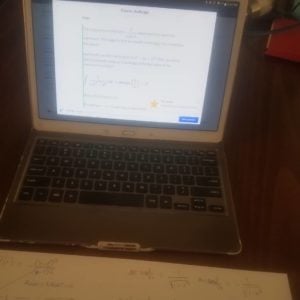
Walters originally used the videos to prepare for college classes. He tested out of Algebra, moved on to Precalculus and then tested out of that as well.
“Then I was like, there’s no way this is going to work for Calculus,” he said.
But he tested out of that too.
Walters continued to visit the Khan Academy website during his four-year college experience, teaching himself mathematics and taking night classes in computer science. Until earlier this year, he was still serving in the Navy as well.
“The problem with the Navy was that I wasn’t really… good,” he said. “I mean, I was fine at the practical stuff. I can shoot, skydive, dive, whatever. But I’ve always been a bit of a rebel, so I got in trouble a lot.”
Walters was eventually fired from being a SEAL for his unruly behavior. He had the choice of staying in the Navy and finishing his time or leaving and enduring a less-than-ideal discharge status. It was around Walter’s departure from the Navy that his brother convinced him to apply to more traditional, top-tier colleges.
“I had to kind of roll the dice and say, ‘Okay, do I want to bank on this 0.01 percent chance that I get into a good university as a transfer student, or play it safe with the Navy?’” he told me. “It came down to knowing what my life would look like
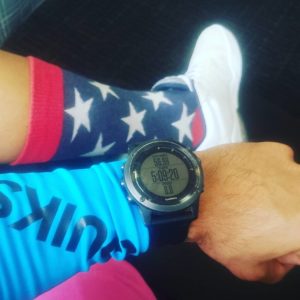
if I stayed down that path, and so I had to sort of just jump off a cliff and build my wings on the way down.”
From December 2017 through March 2018, Walters prepared his college applications, writing and rewriting his application essays multiple times. He took the SAT for the first time in his life, at 30 years old, having only found out about the exam two days before the deadline to register.
When asked whether he ever expected to get into Stanford, Walters’ short answer was “No.” His long answer: there was a moment after writing a specific draft of his personal essay where he thought he might get in. He called the first couple drafts of his essay “awful.” But what they turned into was a raw and heartfelt expression of his experiences. He not only wrote about his Navy experience as a combat medic, but also about how interacting with different people, reading books and learning on his own gave him the knowledge and experience to make the world a better place.
“I remember the day that I decided I was going to write that essay — I was crying all morning,” he said. “But that’s when I realized that I have all this to say, and if a person reads this, and it resonates with them, then I might have a chance.”
It turns out that he had more than just a chance. Walters was also accepted to Princeton and Yale, but ultimately selected The Farm as his new home. That made me curious — why Stanford?
Walters said that Princeton was the school he initially looked into because his older brother went there. His brother was always the ambitious one in the family, studying rigorously, taking part in an IB program and getting accepted to Princeton as an international student.
But although those were all good reasons, Walters’ choice of Stanford ultimately came down to finding the right fit.
“I kind of felt like the Ivies — considering that I’m kind of a rebel — wouldn’t be ideal for me,” he says. “In a way, I didn’t really choose Stanford. Stanford chose me, by being the only top-tier school where I felt like I could go and still be myself.”
The funny thing is that if he had never been fired from his position at the Navy, he might never have applied to Stanford and he wouldn’t be here today.
“It was the quintessential idea that the thing that’s the obstacle turns out to be the greatest thing to happen to you,” he said.
Why bike?
When asked why he decided to bike all the way from home to Stanford, Walters laughed, recalling what it was like when he found out he got accepted.
“My first reaction was, ‘No way. I don’t deserve this,’” he said.
For him, there were two main motivations behind the bike trip: to prove to himself that he was worthy of attending a school like Stanford — being a “Navy guy” just meant that the best way to celebrate enrollment was with a physical challenge — and to give back to Khan Academy, the online program that propelled him academically.
Walters called his bike trip Ride or Pi, and turned it into an effort to raise funds for people, such as Sal Khan, who provide educational services online for free. Walters started a campaign to raise awareness, made social media pages and filmed fun videos documenting the journey for his Instagram account. Although he mostly biked alone, Walters gave thanks to his older brother Mike, who slept in his car for six days to follow him around and make sure he was safe.
“It was ridiculous,” he said. “And to this day — this is still my favorite thing to say — I have no idea what I’m doing. I didn’t then, and I don’t now.”
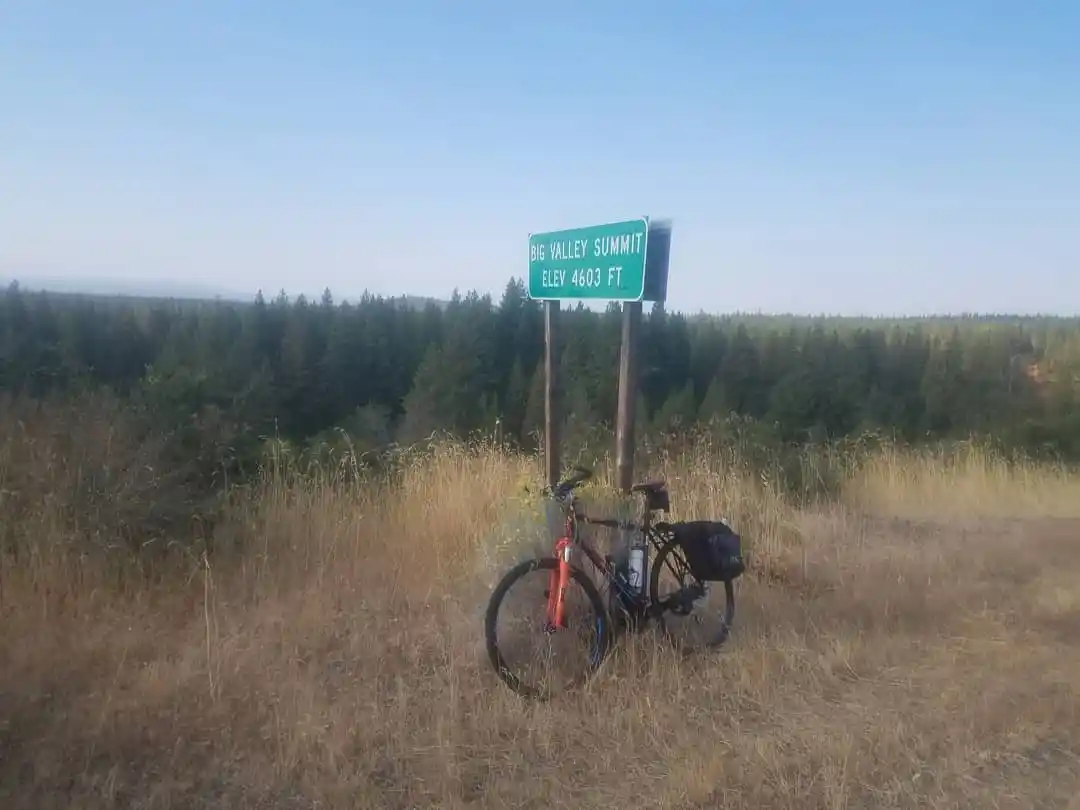
The themed fundraiser did not do as well as he had hoped — he did not reach his fundraising goal, and most of his following came from his family and friends.
“I did go through a phase where I thought, ‘Should I even do this?’” Walters said. “But I realized while I was doing the riding that what I really wanted was to do something challenging because I just like doing challenging things.”
Facing forward
At Hawaii Pacific, Walters studied computer science, the only STEM degree offered through the university. At Stanford, however, Walters is looking to diversify.
“I knew I wanted to do STEM, because I want to work for NASA,” he said. “But what I don’t know is exactly which path to take to get there. I’d heard that math was a really good starting point — no matter what in STEM you do, you’re going to need math — so I thought I would just start with that and see where it takes me.”
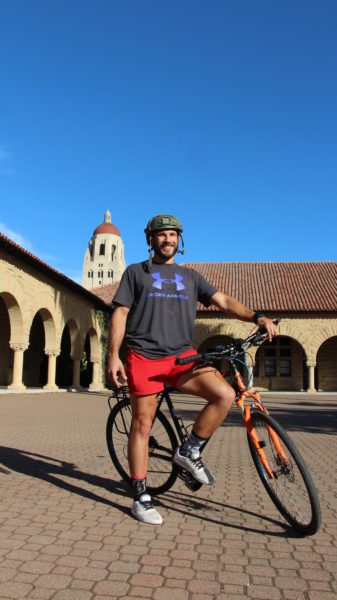
When asked if he hopes to continue spreading awareness about the importance of education while at Stanford, his answer was an enthusiastic yes. He first described the difficulty of opening up and exposing personal experiences online and to people in his life — especially experiences that don’t reflect positively on his character. Regardless, he said that he likes 30-year-old Nestor a lot more than 20- or 25-year-old Nestor.
After sharing his story online and in his life, people started reaching out to him for guidance. He found himself starting conversations and passing along advice.
“What I care about in that regard is reaching out to people like me, who, like 24-year-old Nestor, would not have paid attention, would not have listened [or] been open to new ideas,” he said. “But that’s because he doesn’t know any better. He didn’t know that he was a bad student — he just thought that he was stupid.”
Walters hopes to continue spreading this message, along with other lessons he learned throughout his multifarious life experiences.
“[With the right tools,] kids and adults around the world will be better equipped, inspired, and encouraged to improve themselves,” he writes on his blog. “Those better people make better citizens, better neighbors, better communities, and a better world.”
Contact Elena Shao at eshao98 ‘at’ stanford.edu.
